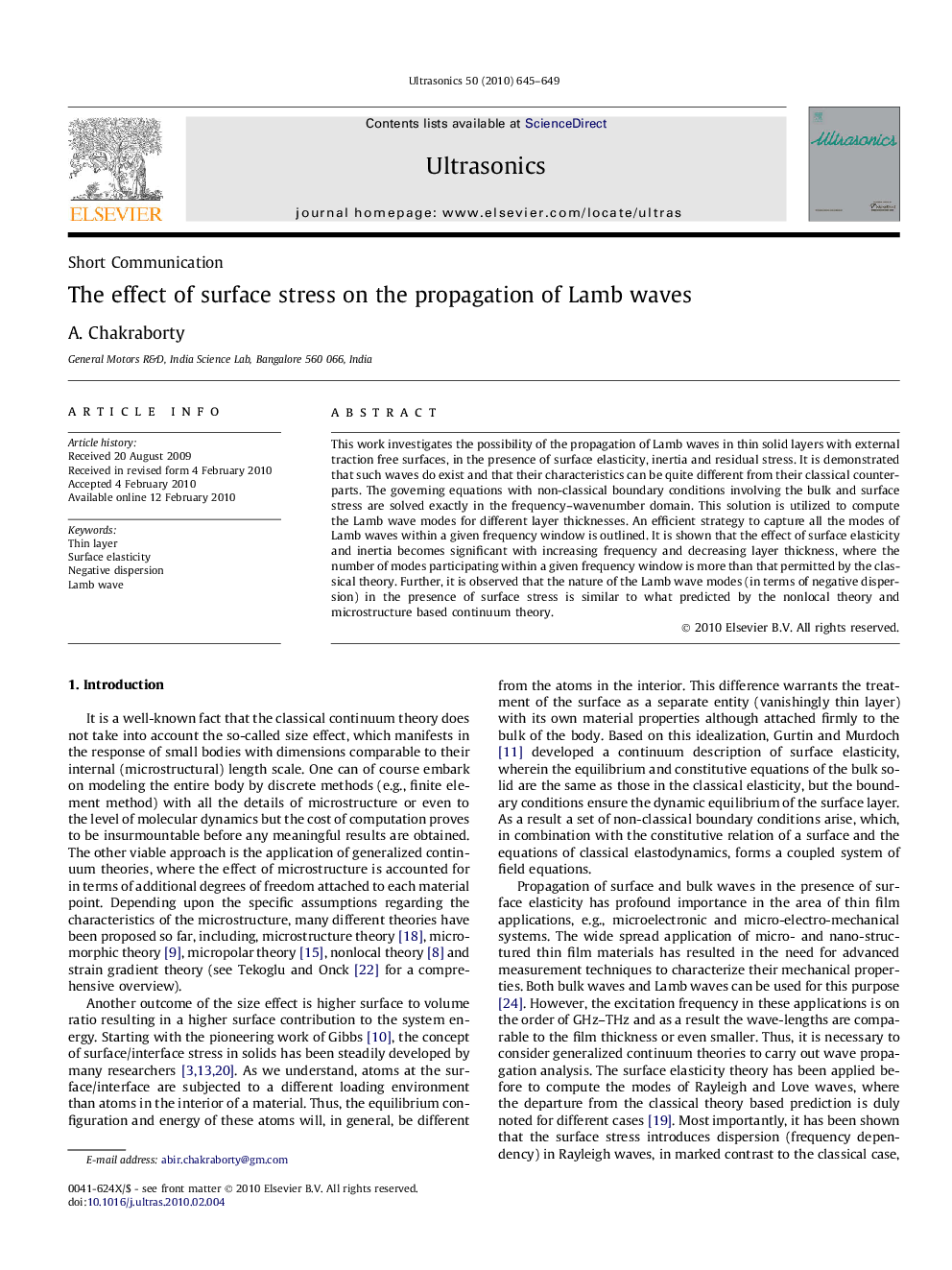| Article ID | Journal | Published Year | Pages | File Type |
|---|---|---|---|---|
| 1759690 | Ultrasonics | 2010 | 5 Pages |
This work investigates the possibility of the propagation of Lamb waves in thin solid layers with external traction free surfaces, in the presence of surface elasticity, inertia and residual stress. It is demonstrated that such waves do exist and that their characteristics can be quite different from their classical counterparts. The governing equations with non-classical boundary conditions involving the bulk and surface stress are solved exactly in the frequency–wavenumber domain. This solution is utilized to compute the Lamb wave modes for different layer thicknesses. An efficient strategy to capture all the modes of Lamb waves within a given frequency window is outlined. It is shown that the effect of surface elasticity and inertia becomes significant with increasing frequency and decreasing layer thickness, where the number of modes participating within a given frequency window is more than that permitted by the classical theory. Further, it is observed that the nature of the Lamb wave modes (in terms of negative dispersion) in the presence of surface stress is similar to what predicted by the nonlocal theory and microstructure based continuum theory.
